Choosing the best privacy screen for your backyard
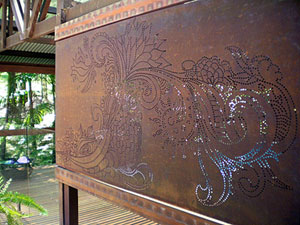
Exterior Decorative Screen
Internal decorative privacy screens first appeared in China in the mid-600's. However external privacy screens are a more recent phenomenon.
They began to appear in Australian residential and commercial building during the 1950's and 1960's, as a direct result of high density living and higher incomes.
Since the late 1990’s they have become more popular and more decorative; with both contemporary and traditional materials being used.
So what type of screen is right for your backyard? Here's an easy 4 step guide.
Step 1 - Analyse your space
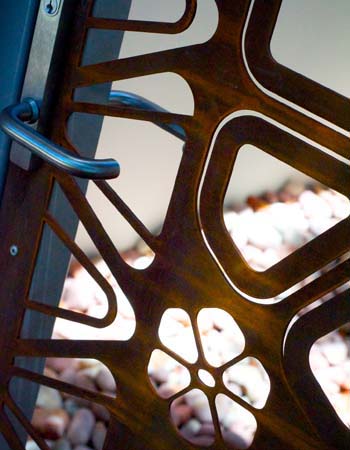
Laser cut gate
Look at the area you want to screen and be clear about what you are trying to achieve. Is it just visual screening you need, is it acoustic or just for style.
Then create a list of requirements that your screen must meet.
The list may include points such as:
- reduce traffic noise
- match the theme of the front yard
- offer visual privacy from people looking in, but allow views out
- look like a sculptural piece
- withstand strong ocean breezes
- offer shade from the sun in the summer from the west
- be highly weatherproof
- critical dimensions i.e. 1900mm wide x 800mm high.
Most screen companies have in-house designers but if you prefer an independent opinion, engage an interior designer or an architect to ensure that your requirements are met.
Transition spaces (like between the street and your front door) really benefit from the use of privacy screens.
Decorative privacy screens can be used to divide large open spaces; creating better visual separation between areas such as a vegetable garden and an Alfesco dining space.
Step 2 - Form a solid design idea
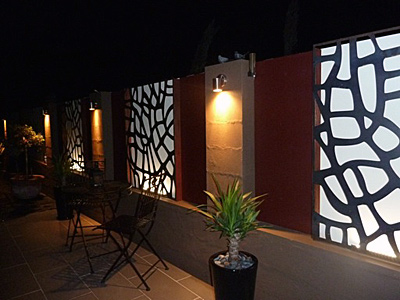
Mink Flamingo Laser Cut Steel Privacy Screens
There are many concepts and graphic styles to choose from. Think about the type of screen that would best suit the exterior style of your existing home and yard if already established. If you are incorporating your screen into new landscaping, ensure that your screen works with its plan and style. Important: Do not purchase a screen just because you loved the look of it. It needs to work with what you already have, or have planned.
A screen can also be a sculptural piece of art. If so, you need to spend time designing it, for it is an opportunity to incorporate something personal into the design. Here is an example. Perhaps the property was originally owned by a close relative who loved fishing in Hardys Bay. The design or form of your screen could evoke fishing, or something unique to Hardys Bay.
The screen will mean so much more to you if it's thought provoking and beautiful, as well as useful.
Step 3 - Know your screen material options
Today you will find many options for a screen’s style and construction. A strong concept with modern architectural materials can really create a unique focal point in your backyard.
Contemporary materials can include:
Weathered steel - very popular
Architects love weathered steel for it can look stunning in residential situations. It has a few different names, including "CorTen" and "rusted steel". Don't be cautious about this product- it is designed to corrode. Once you familiarize yourself with the product and understand how it will wear, you can anticipate any problems.
For example, weathered steel can cause staining to hard landscaped areas; so allow for this and accommodate the run-off into a pond or onto a grassed area.
Also remember that weathered steel is purchased without the rusted patina. It will start to rust after a period in the weather and only to a shallow depth within the steel before it blocks out oxygen which stops any further rusting.
Many screens are created using laser-cutting technology. The design or impression options are as endless as your imagination.
Stone
Natural stone weathers beautifully and is classic. There are no weathering issues to consider and the product ages very well.
Timber
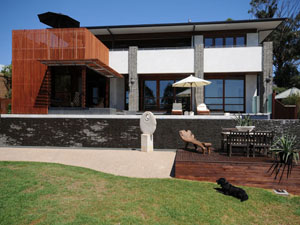
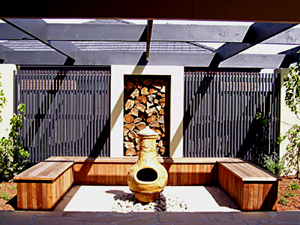
Images courtesy of ScreenBoards.com.au
Wooden screens can work well for this application but they can require maintenance if you don't want your timber going a grey colour. But if a grey patina suits your theme, it can look fantastic.
Stainless steel
Stainless steel screens also often use laser cut technology. While weathered steel is designed to rust, stainless steel is not. The steel keeps its original appearance but depending on the grade of steel, its finish may slightly change over time.
Vertical garden
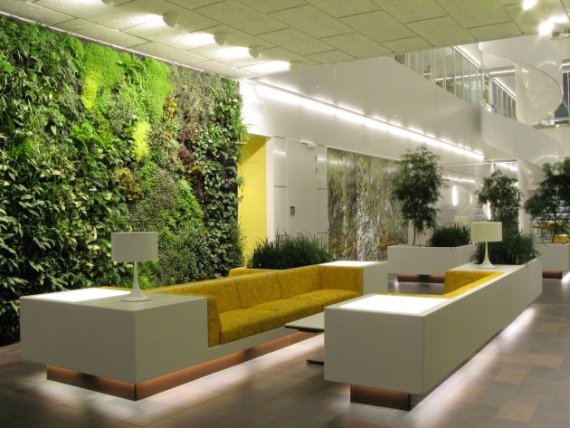
Image courtesy of Vertical Garden Design
Another approach is to use a vertical garden to create a privacy screen. This creates a unique look that can change with the different seasons.
One side of the wall, perhaps facing the kitchen, could a wall of herbs. On the other side could be hardy plants to block out westerly sun from the kitchen.
Step 4 - Compare costs
Of all the materials mentioned above, the ones with a higher labour content are generally more expensive. The most economical product above would be the timber screen, since it is easy to source, inexpensive and easy to work with in comparison to steel for example.
